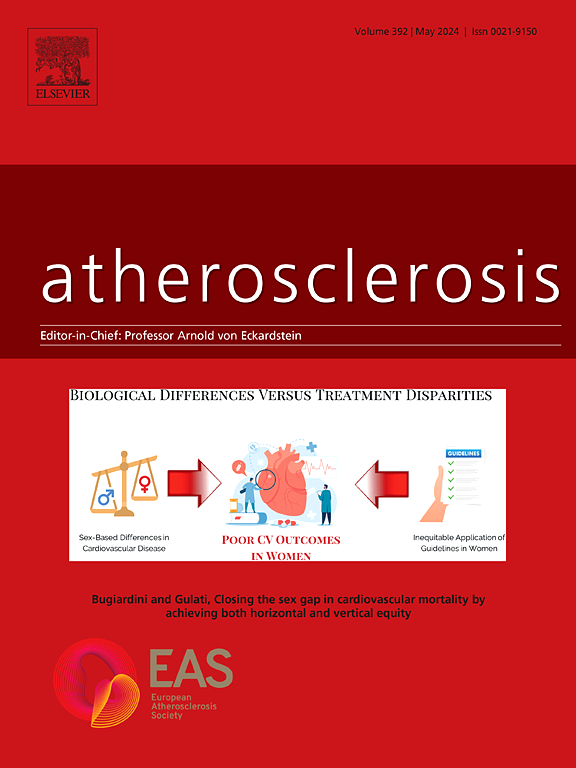Achieved levels of apolipoprotein B and plaque composition after acute coronary syndromes: Insights from HUYGENS
IF 4.9
2区 医学
Q1 CARDIAC & CARDIOVASCULAR SYSTEMS
引用次数: 0
Abstract
Background and aims
Addition of the PCSK9 inhibitor, evolocumab, to statin therapy promoted coronary plaque stabilization after an acute coronary syndrome. While apolipoprotein B (ApoB) has been proposed as a goal for lipid-lowering therapy in the prevention of cardiovascular disease, its association with plaque stability has not been studied.
Methods
The High-Resolution Assessment of Coronary Plaques in a Global Evolocumab Randomized Study (HUYGENS) used serial optical coherence tomography to assess coronary plaque phenotypes in patients with non-ST elevation myocardial infarction treated with evolocumab plus statin or placebo plus statin for 52 weeks. Changes in plaque composition were studied in patients according to achievement of a goal ApoB level <65 mg/dL.
Results
Of 112 patients, 67 (59.8 %) achieved the ApoB goal and had lower ApoB values at follow-up compared with those not at goal (37.1 ± 15.0 vs 92.7 ± 19.4 mg/dL, P < 0.001). Patients achieving the ApoB goal demonstrated a greater increase in minimum fibrous cap thickness (+44.6 ± 36.0 vs +24.9 ± 38.1 μm, P = 0.007) and a more pronounced decrease in lipid arc (−57.8 ± 52.8 vs −27.0 ± 59.2°, P = 0.005) at follow-up, compared with those who did not achieve the ApoB goal. At follow-up, thin-cap fibroatheroma (TCFA) was less prevalent among patients achieving the ApoB goal compared with those not at goal (9.0 vs. 40.0 %, P < 0.001). Multivariate analysis demonstrated that achieving an ApoB <65 mg/dL at follow-up independently associated with the absence of TCFA at follow-up (P = 0.004).
Conclusions
Lower achieved ApoB levels associated with evidence of greater plaque stabilization even after controlling for low-density lipoprotein cholesterol levels. This highlights the importance of optimizing ApoB levels for the reduction of cardiovascular risk.
Clinicaltrialsgov identifier
NCT03570697.

求助全文
约1分钟内获得全文
求助全文
来源期刊

Atherosclerosis
医学-外周血管病
CiteScore
9.80
自引率
3.80%
发文量
1269
审稿时长
36 days
期刊介绍:
Atherosclerosis has an open access mirror journal Atherosclerosis: X, sharing the same aims and scope, editorial team, submission system and rigorous peer review.
Atherosclerosis brings together, from all sources, papers concerned with investigation on atherosclerosis, its risk factors and clinical manifestations. Atherosclerosis covers basic and translational, clinical and population research approaches to arterial and vascular biology and disease, as well as their risk factors including: disturbances of lipid and lipoprotein metabolism, diabetes and hypertension, thrombosis, and inflammation. The Editors are interested in original or review papers dealing with the pathogenesis, environmental, genetic and epigenetic basis, diagnosis or treatment of atherosclerosis and related diseases as well as their risk factors.
 求助内容:
求助内容: 应助结果提醒方式:
应助结果提醒方式:


